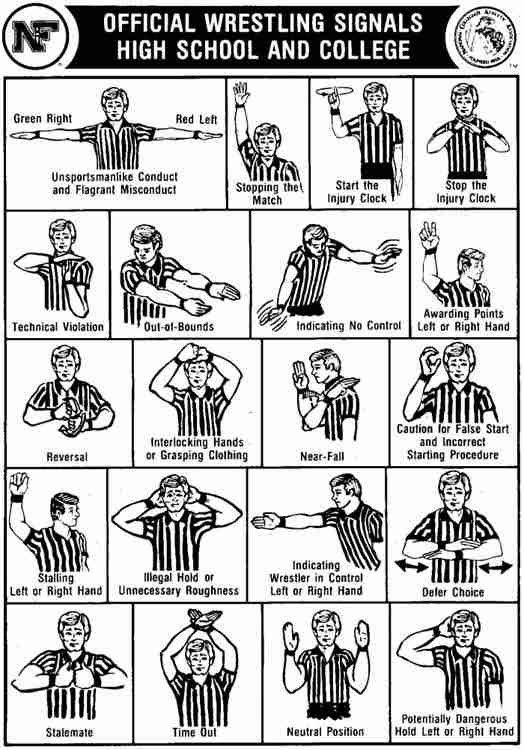Referee Signals

Knowing the meaning of each of the wrestling referee hand signals use can greatly increase your understanding and enjoyment of watching wrestling matches.
Start of the Match: The referee blows the whistle to signal the start of the match. They typically raise their arm at a slight angle to indicate the beginning of action.
Escape: The referee raises one arm to the side to signal an escape. This awards one point to the wrestler who successfully breaks free from the control of their opponent.
Takedown: To indicate a takedown, the referee extends both arms out in front of them, parallel to the mat. This awards two points to the wrestler who takes their opponent down to the mat while maintaining control.
Reversal: A reversal is signaled by the referee raising both arms up, perpendicular to the mat. This awards two points to the wrestler who escapes from the bottom position and gains control on top.
Near Fall: For a near fall (also known as back points or nearfall points), the referee raises one hand to signal one count and holds it near the mat. If there are two or three counts, they continue raising and holding their hand higher for each count. Near fall points are usually awarded when one wrestler almost pins their opponent’s shoulders to the mat.
Stalling: To indicate stalling, the referee extends their arm diagonally above their head. Stalling is a penalty given to a wrestler who is not actively engaging or trying to score points.
Illegal Hold: The referee forms an “X” with their forearms to indicate an illegal hold or an illegal move. This might result in a penalty or points awarded to the opponent, depending on the situation.
Technical Violation: If a wrestler commits a technical violation, like an improper start or improper uniform, the referee points to the offending wrestler and then to the opponent. This usually results in points awarded to the opponent.
Injury Time: To signal injury time, the referee makes a cross shape with their forearms. This indicates that the match is temporarily paused due to an injury.
End of Period: At the end of a period, the referee blows the whistle and raises their hand to signal the end of the current period.
It’s important for wrestlers, coaches, and fans to be familiar with these signals to understand the ongoing action and decisions made during the match.
